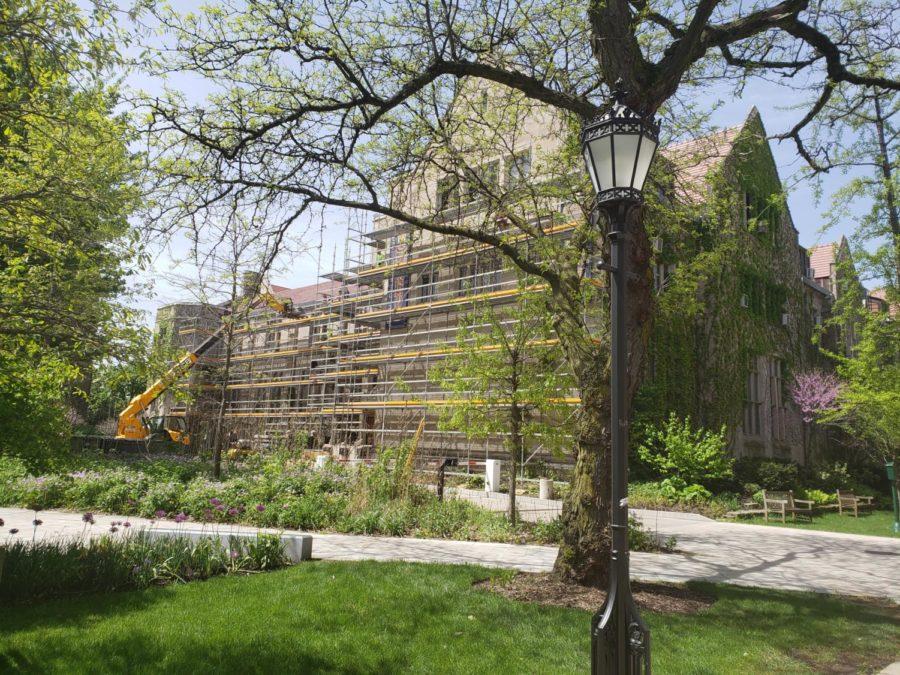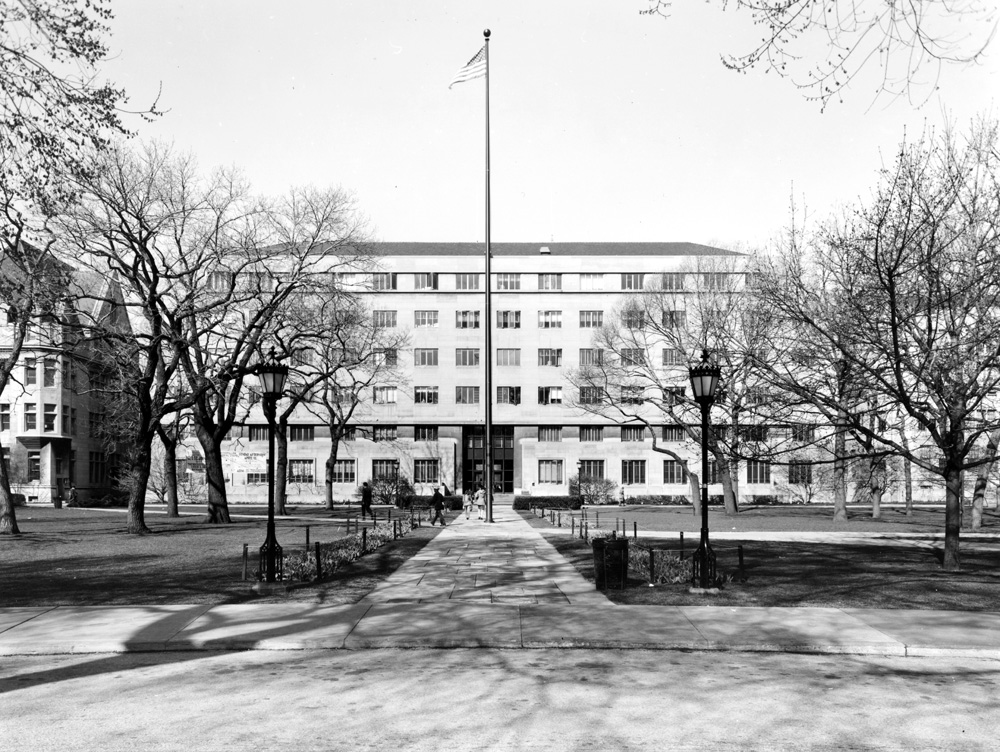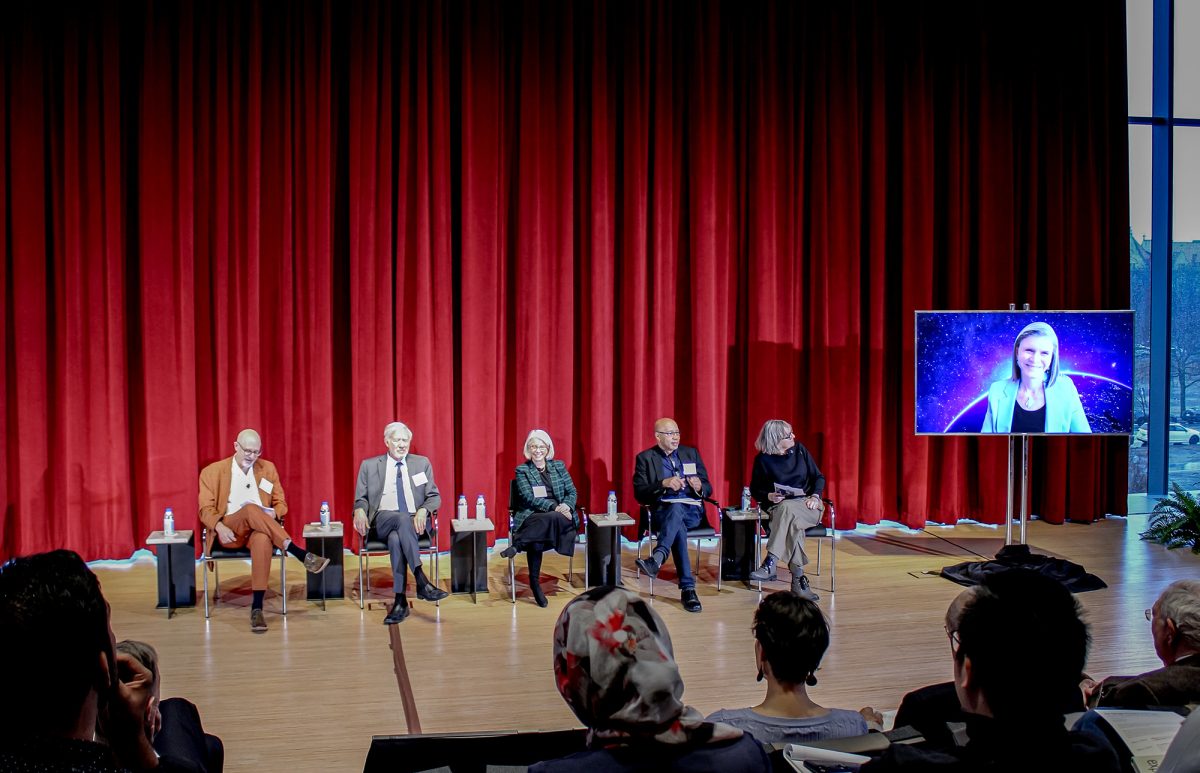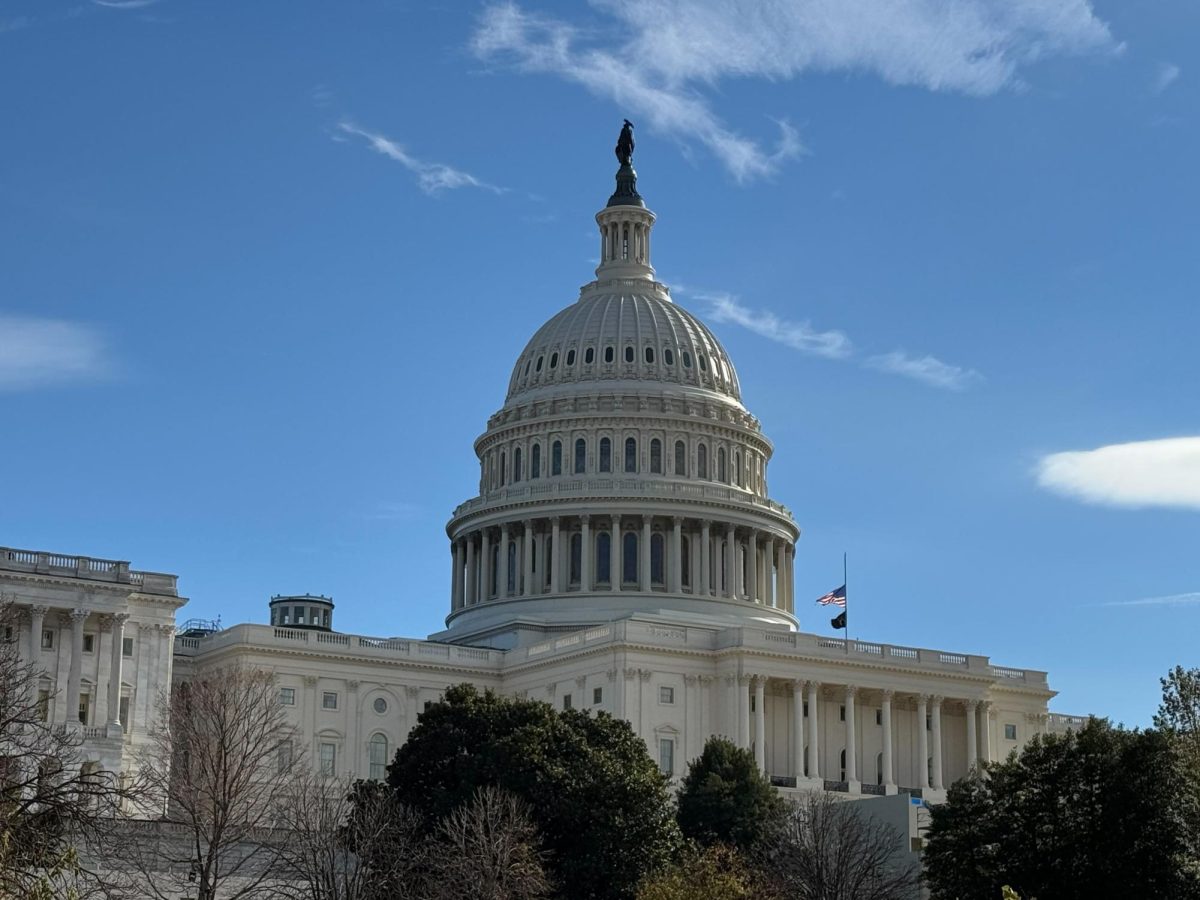[This is the first in a series of articles focused on campus sustainability.]
On a chilly, gray afternoon in the fall of 2018, third-year Perrin Davidson took a walk.
He set out from campus, walking north a few blocks and then east along 53rd Street to his destination: an office building, sleek and austere, at 53rd and South Harper. Davidson entered.
A security guard eyed him as he approached the front desk to confirm his appointment. He was directed to take the elevator up to the 10th floor, where he was greeted by a freshly scented lobby and a set of plush chairs. Davidson sat, waiting for his meeting to begin.
After a few moments, he was greeted by the person he came to meet: Sara Popenhagen, the lone employee of the University of Chicago’s Office of Sustainability.
Housed off-campus under the University’s Facilities Services Department, the Office of Sustainability (OS) rarely takes the spotlight in student discourse; in recent months, however, student environmental leaders have thrust the remote office into the public eye.
“BE IT RESOLVED the University administration should hire at least three (3) more personnel to expand the work of the Office of Sustainability,” a unanimously passed February 2020 Student Government (SG) resolution reads.
Peer institutions, including Brown, Harvard, Northwestern, Princeton, the University of Illinois at Chicago, Yale, and Stanford, have a minimum of four, and an average of seven, full-time employees in their Offices of Sustainability, the SG resolution states. The University of Chicago has one.
UChicago: Falling Behind?
The call for increased staffing at the OS is just one of many demands being made by student environmental leaders at UChicago. To many students involved in environmentalism on campus, the message of the moment is clear: that, as stated in a November 2019 presentation by student sustainability leaders, “UChicago is behind.”
Fourth-year Kimika Padilla, Chair of SG’s Committee on Campus Sustainability (CCS), told The Maroon in an interview that the February SG resolution had three main demands.
The first, she said, was to call on the University for a public commitment to more ambitious long-term sustainability goals. UChicago’s long-term climate plan is laid out in its 2016 Sustainability Report. Using a “target base year” as its baseline—a figure calculated by taking the average greenhouse gas emissions for fiscal years 2012 through 2014—the report aims for a 20 percent reduction of carbon intensity, a measure of emissions, by 2025. This would bring the University’s carbon intensity to 13.2 kg eCO2 per square foot.
The SG resolution outlined two primary concerns with the 2016 baseline report. First, it said, the initial goal of reducing emissions by 20 percent was simply not ambitious enough; many peer institutions—of which the resolution lists several: Brown, Harvard, Northwestern, Princeton, Stanford, the University of Illinois at Chicago, University of Pennsylvania, and Yale—have committed to become carbon neutral by 2050 or earlier.
While UChicago has not committed to carbon neutrality, the University announced on Monday that it is increasing its carbon emissions reduction goal from 20 percent by 2025 to 50 percent by 2030. According to the announcement, the University is slightly ahead of its initial goal, having reduced its intensity by 11 percent as of 2018.
Padilla said that she and other environmental leaders were “encouraged” by the University’s announcement.
“The target to reduce greenhouse gas emissions 50 percent by 2030 gets us half of the way there!” she wrote in a comment to The Maroon the day of the announcement. “We hope that the University’s progress in bringing its emissions down over the next decade will provide compelling evidence that a carbon neutral future is possible.”
In addition, the resolution states, the 2016 report measures University emissions in terms of carbon intensity, a measure of carbon dioxide emissions per square foot, rather than net emissions, an absolute quantity of carbon released.
The resolution argues that using carbon intensity as a metric of emissions may misrepresent the University’s environmental impact. Because it is a function of area, carbon intensity on campus may decrease simply due to an increase in the campus’ square footage, rather than an actual reduction in total carbon output; in fact, the resolution contends, this metric could potentially conceal an increase in net emissions.
“Recent building constructions such as the new Woodlawn Residential Commons will significantly increase the total square footage of campus buildings,” the resolution reads. “It is possible that the University will increase its net emissions even as it reports a reduction in carbon intensity.”
The University also announced on Monday that it will transition to using net emissions as a metric of carbon output, rather than carbon intensity.
The second “big ask” of the SG resolution, Padilla said, was increased staffing at the OS, the administrative office responsible for sustainability planning and oversight on campus.
“Our Office of Sustainability actually only consists of one full-time employee,” Padilla said. “It’s really hard for our Office of Sustainability to continue doing the great work that we need them to do if they are so severely limited by personnel.”
But in addition to the relatively small size of UChicago’s office, Padilla also sees room for improvement in the role that the OS plays on campus. Other institutions’ counterparts function not simply as administrative departments, but as centers for collaboration among University community members.
“A lot of Offices of Sustainability act as, essentially, a hub, kind of a coming-together place, for different students, faculty, University administration to work together productively,” Padilla said.
The remoteness of UChicago’s OS from central campus makes it difficult to form this sense of community, she said.
“The Office of Sustainability is currently located under Facilities Services, kind of administratively within the University,” Padilla said. “They also physically sit in Facilities Services [in Harper Court]…which makes it very difficult for students to go there and actually access them.”
SG’s third main demand was for improved environmental data transparency. The resolution calls on the University to make public their annual and monthly data about net greenhouse gas emissions, food consumption, and waste management—data which, in the past, students have had trouble getting their hands on.
Data Transparency
In the spring of 2018, having just become co-president of the Environmental Research Group (ERG), Perrin Davidson was informed that the group had been commissioned a project by the OS.
“We were handed a project by the Office of Sustainability with a big, red stamp that said ‘Confidential,’” Davidson told The Maroon. “They came to us, as the quantitative undergraduate research think-tank group on campus.”
The focus of the project was energy use in buildings on campus. ERG was asked to determine how campus could increase its energy efficiency through the behavior of individuals, such as closing fume hood sashes or turning off idle electrical devices, rather than through structural and management aspects of buildings.
So, the following fall, ERG began recruiting a team to work on the project: they set up an application process, even turning some candidates away to form a selective research group of 25 students.
“We start basing our whole entire first project [of the year]…around this seemingly very official and very concrete project,” Davidson said. “At the time, it seemed like an incredible opportunity.”
But when they reached out to the OS for the building energy use data needed to perform the project, they got either no reply, or an occasional “We’re working on it.” The students who ERG had recruited to work on the project began to inquire into the status of the data; Davidson gave them busywork, in hopes that the data would be forthcoming.
“Five months go by,” Davidson said, “No data.”
Ultimately, ERG was never given the information they needed to complete the project.
“We produced a super hand-wavy presentation for the Office of Sustainability that basically tells them everything they already know,” he said. “We were not able to give any deliverables to the people who approached us about the project, because we weren’t given any data.”
When asked about the reason for the data withholding, Davidson said that the information they needed “most certainly exists;” the University’s upcoming Environmental Frontiers summer program promises summer interns access to the very data ERG was requesting. Instead, he believes that the data was deliberately withheld: an opacity characteristic of the University in this regard.
“It’s pretty clear that the reason we weren’t able to get the data is because the administration has restricted such data releasing,” he said. “It’s the accessibility of data that is really inhibiting any sustainable action on campus.”
President of Phoenix Sustainability Initiative (PSI) Amy Tian told The Maroon that she has encountered the same difficulty. "In the past, we’ve come to the OS asking for data, but sometimes they wouldn't get back to us and they just would keep [the data] tied up,” she said.
What’s more, said Tian, when they did acquire the data, its “resolution,” or quality and specificity, remained subpar.
“Even if we were able to get our hands on the data, which was pretty rare, the data would not be high resolution,” she said. “More transparency is needed to display the data, and also a greater degree of specificity with how it's collected.”
Concerns about data transparency are widespread among student environmental leaders; the unanimously passed SG resolution identifies a “serious lack of student and public access to transparent information about campus electricity, natural gas, and water consumption as well as food and waste management data.”
University spokesperson Gerald McSwiggan wrote in an email to The Maroon that data sharing was “an important aspect of the University’s sustainability approach,” and that the University has published several general overviews of campus’ greenhouse gas emissions data.
McSwiggan also said that the University has implemented an Energy Management Information System (EMIS) to track and analyze campus utility data. The University intends to make the EMIS public “in the near future,” he wrote.
Many students involved in sustainability also stressed that the employee of the OS, Popenhagen, was not at fault for the lack of data; Davidson said that she is “working at maximal capacity” and is his “personal hero.” Rather, he said, the OS is structurally unequipped to handle student initiatives due to underinvestment in the department.
“There aren’t those resources that the OS needs to effectively deal with students, and work with students to make UChicago a more sustainable place,” he said.
To Davidson, this lack of resources reflects a broader reluctance on the part of the University to invest in sustainability.
“Leaders of the administration…aren’t prioritizing sustainability at UChicago,” he said. “There needs to be a stated want—an interest by the current administration to increase the management and structure that goes into the Office of Sustainability.”
Walker Gillett, a board member of ERG, believes that while many administrators support sustainability initiatives, the concrete investment has been lacking.
“There’s a difference between saying you’re on board with sustainable issues and actually committing funding to sustainable issues,” Gillett said. “Financially, we have yet to see significant commitment on the part of the University, and that’s really what matters.”
A Cause for Optimism?
In spite of these obstacles to environmental progress, some believe that things have been looking up for the sustainability effort in recent months.
Last fall, leaders of several environmental student groups—including PSI, ERG, CCS, Environmental Justice Task Force, and public policy think tank Paul Douglas Institute—joined forces to form the umbrella group UChicago Environmental Alliance (UCEA).
UCEA was born out of a presentation that environmental leaders were invited to give last fall, where representatives from sustainability student groups addressed members of the Board of Trustees about the University’s role in addressing climate change. After the presentation, Tian said, “We [environmental leaders] realized, ‘Wow, it was really helpful for all of us to come together and talk about these things.’”
What makes the organization so unique, she said, is that it represents an unprecedented collaboration by sustainability-related student groups to push a single, collective message. Consequently, UCEA has the self-declared goal of dealing with a higher level of administrators that individual groups could not reach.
“A singular group, I think, can only do so much,” explained Tian. “The vision with UCEA is that [it becomes] a quasi-administrative working group.”
Among UCEA’s achievements so far has been the creation of a Green Fund, a pool of grant money worth $50,000 housed under the Department of Campus and Student Life that will be dedicated to supporting student sustainability projects. UCEA initially brought up the idea of a Green Fund at the presentation with Board of Trustees members before they presented it to Michele Rasmussen, Dean of Students in the University.
Another new campus sustainability initiative is the Environmental Frontiers program, spearheaded by UChicago’s Mansueto Institute for Urban Innovation. As part of the program, for a 10-week period during the summer, multiple teams of undergraduates working as research assistants will be granted access to the University’s EMIS to work on projects such as developing a campus energy dashboard and a “sustainability app and tool.”
According to Anne Dodge, executive director of the Mansueto Institute, the emphasis of the summer program is on an applied, data-driven approach.
“[We] want to make sure that students who care about these issues can be grounded with projects and research that gives them an empirical basis,” she said.
Nonetheless, certain stipulations of the Environmental Frontiers program have raised questions as to the transparency of these projects. According to the Research Assistant job description, students “will be expected to keep this data confidential during and after the Research Assistantship.”
McSwiggan wrote in an email to The Maroon that the program will use confidentiality agreements because the data shared with the Environmental Frontiers interns “will likely be more granular” than the EMIS data to be published online.
Dodge said that the decision to include NDAs was primarily administrative. “The big picture answer is that it's what made everyone feel the most comfortable,” she said.
Dodge views the releasing of data, despite the prerequisite of NDAs, as a sign of the University’s increasing willingness to be open about sustainability.
“It is part of a trajectory that the University’s on toward more transparency,” she said. “But it’s taking it at a pace that is almost certainly frustrating for students."
At the end of the day, the stakes of UChicago’s action—or inaction—are clear to student leaders like Padilla.
“Obviously, individual choices are incredibly important,” she said, “but institutions are really where the high-level, one-off decisions happen that really determine…how our world is going to move forward on this all-important issue.”
“We’ve reached a point in time where, unfortunately, it’s not a question of whether or not we act; it’s imperative.”










